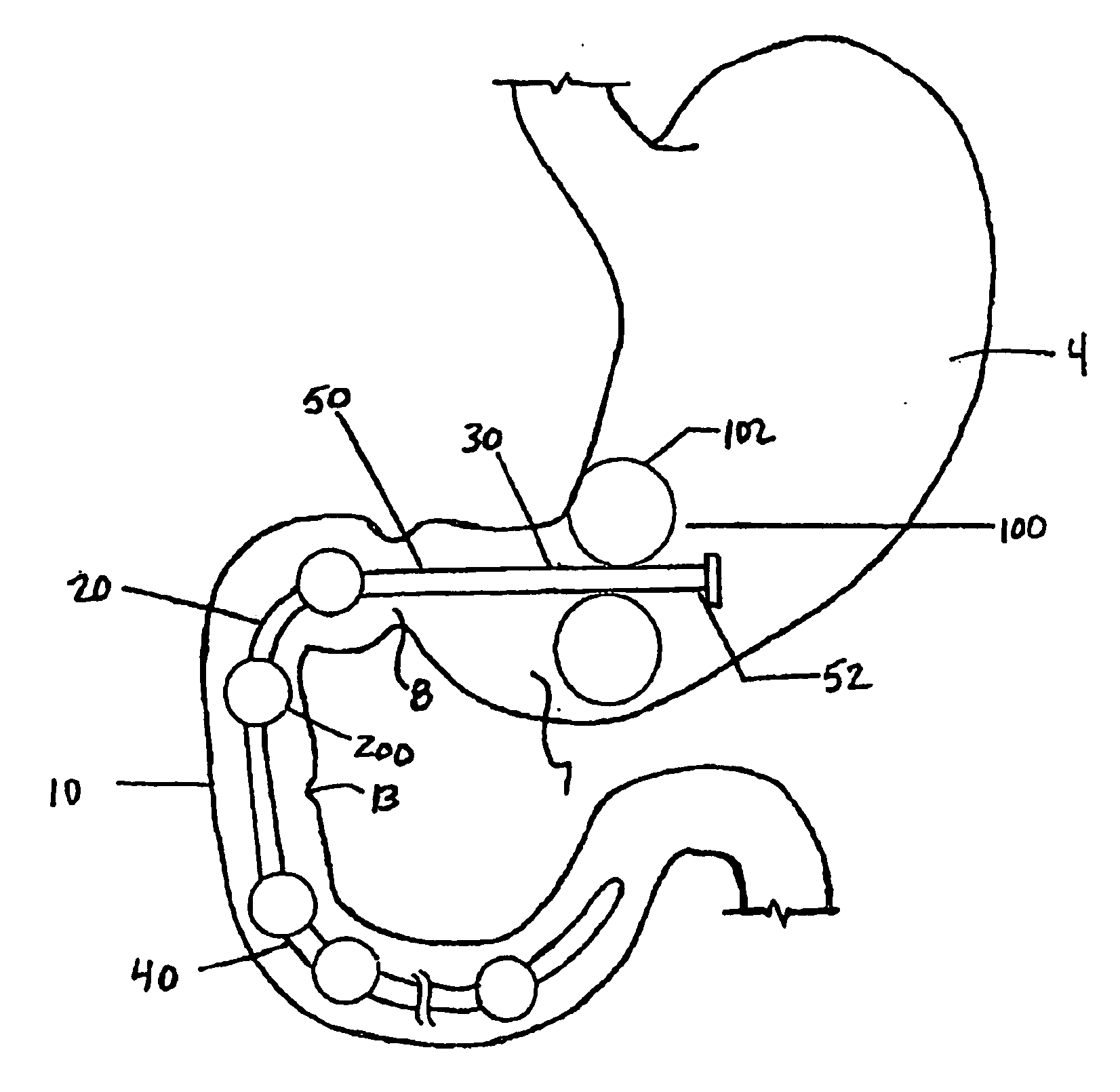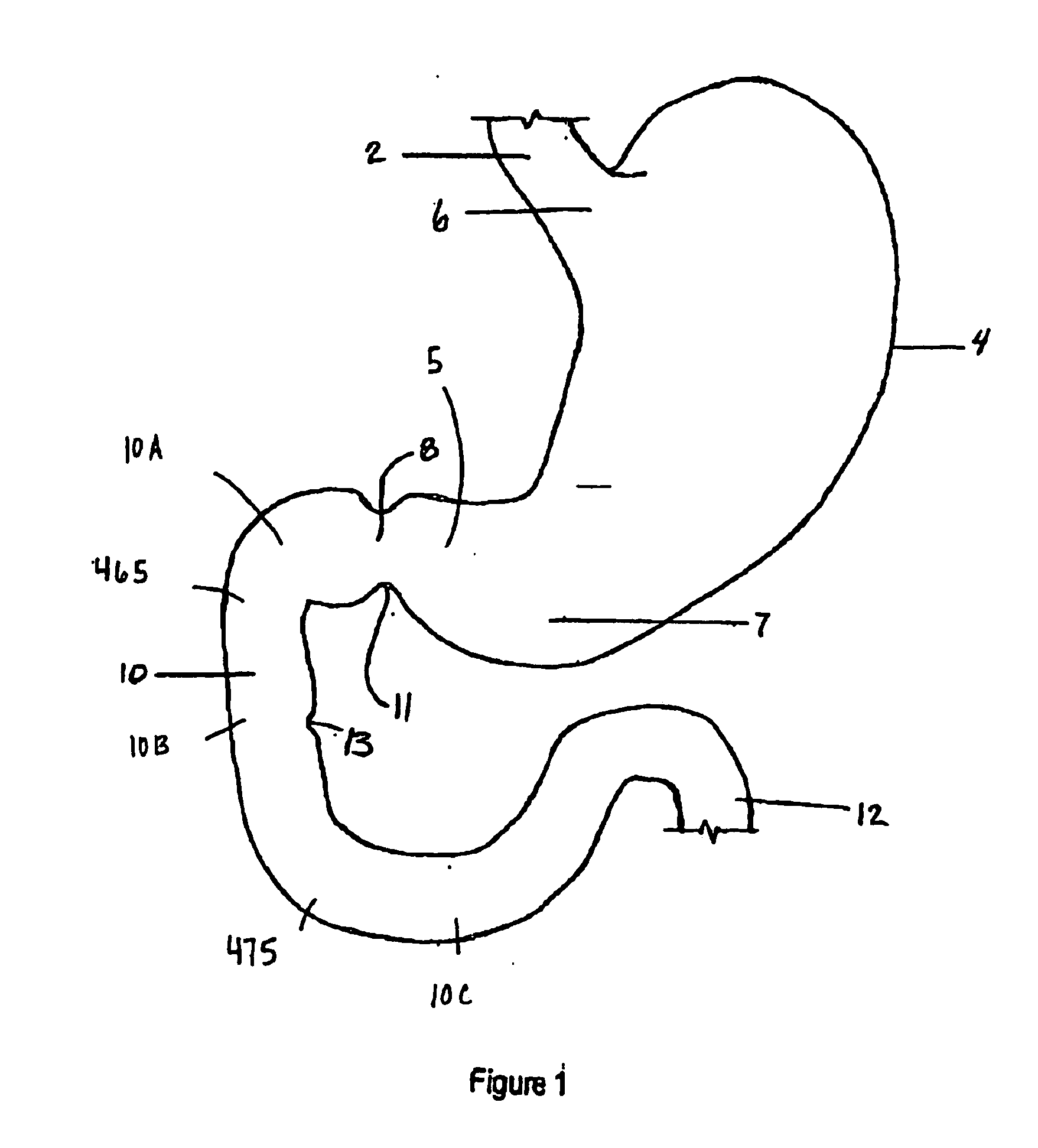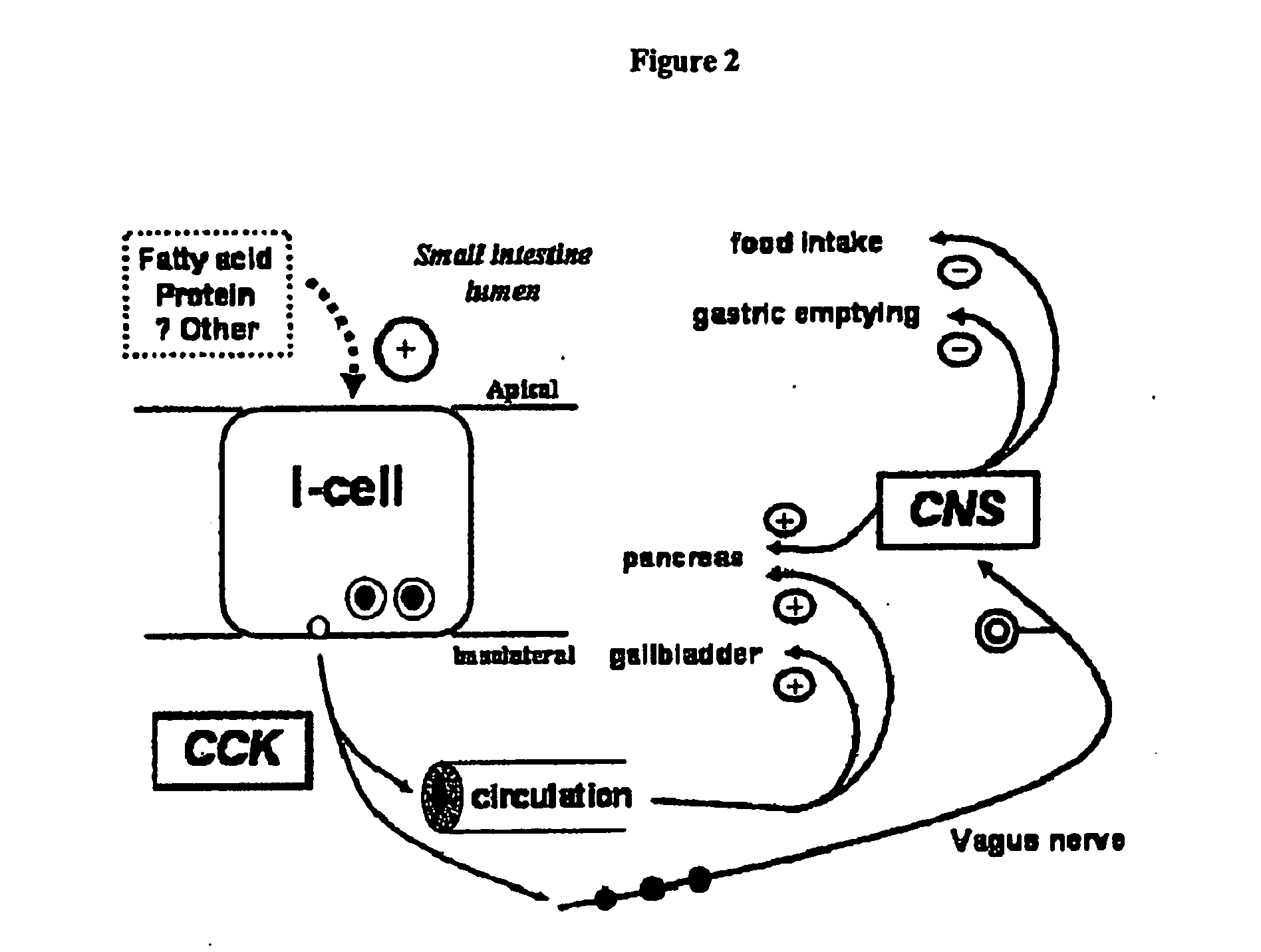Methods and devices to curb appetite and/or to reduce food intake
a technology of food intake and medical devices, applied in the field of medical devices and methods related to curbing appetite and/or reducing food intake, can solve the problems of limiting the achievement of sustained weight loss in many individuals, failing to effectively control the rapid growth in the incidence and severity of obesity seen in the united states, and troublesome management of obesity as a health concern
- Summary
- Abstract
- Description
- Claims
- Application Information
AI Technical Summary
Benefits of technology
Problems solved by technology
Method used
Image
Examples
Embodiment Construction
Embodiments of the Device In Situ
[0074]FIG. 1 provides a view of the human gastrointestinal (GI) tract, including the stomach 4 and duodenum of the small intestine 10. Important features are the esophagus 2, stomach 4, antrum 7, pylorus 8, pyloric valve 11, duodenum 10, jejunum 12 and ampulla of Vater (or hepatopancreatic ampulla) 13, which is formed by the union of the pancreatic duct and the common bile duct. Functionally, the esophagus 2 begins at the nose or mouth at its superior end and ends at the stomach 4 at its inferior end. The stomach 4 encloses a chamber which is characterized, in part, by the esophageal-gastric juncture 6 (an opening for the esophagus 2) and the antrum-pyloric juncture 5 (a passageway between the antrum 7 through the pylorus 8 to the duodenum 10 of the small intestine). The pylorus 8 controls the discharge of contents of the stomach 4 through a sphincter muscle, the pyloric valve 11, which allows the pylorus 8 to open wide enough to pass sufficiently-d...
PUM
 Login to View More
Login to View More Abstract
Description
Claims
Application Information
 Login to View More
Login to View More - R&D
- Intellectual Property
- Life Sciences
- Materials
- Tech Scout
- Unparalleled Data Quality
- Higher Quality Content
- 60% Fewer Hallucinations
Browse by: Latest US Patents, China's latest patents, Technical Efficacy Thesaurus, Application Domain, Technology Topic, Popular Technical Reports.
© 2025 PatSnap. All rights reserved.Legal|Privacy policy|Modern Slavery Act Transparency Statement|Sitemap|About US| Contact US: help@patsnap.com



